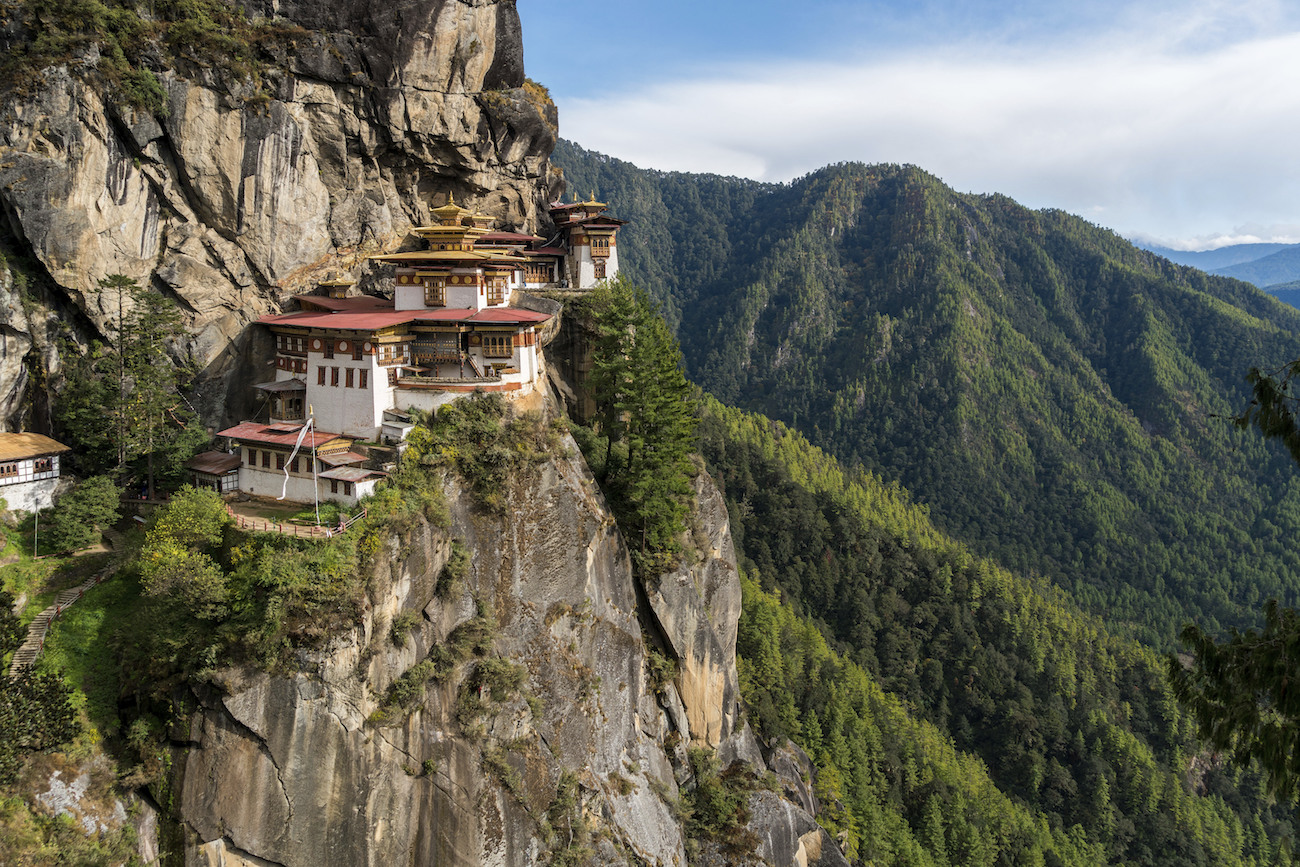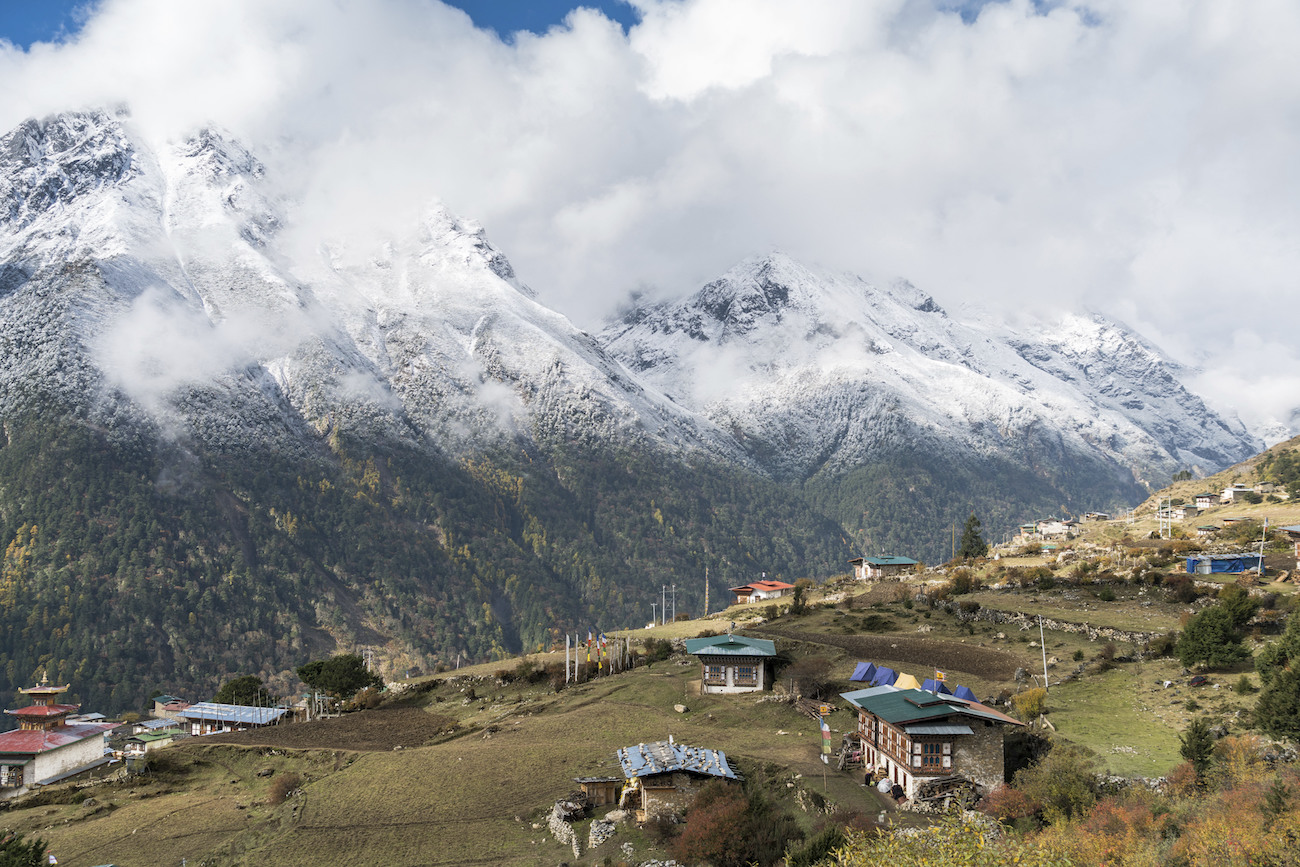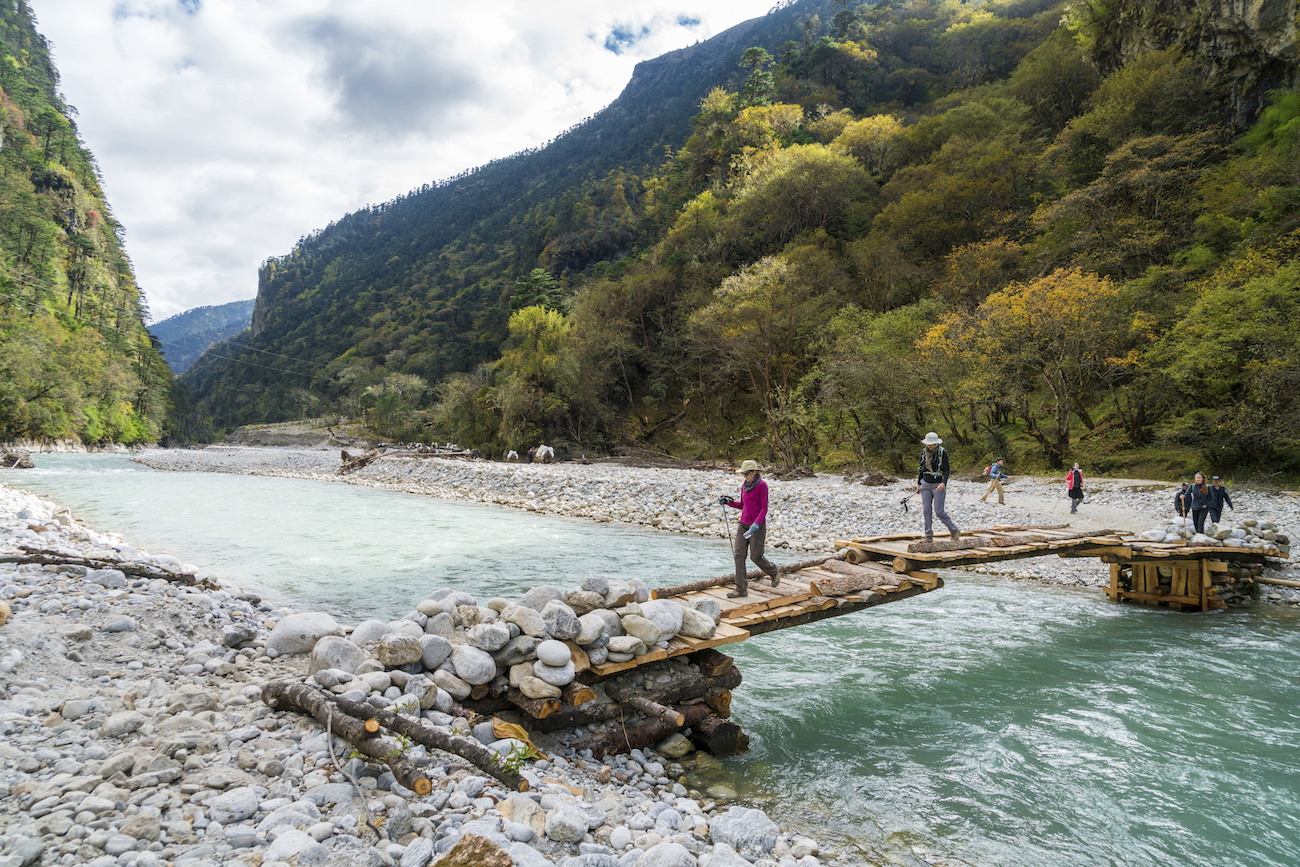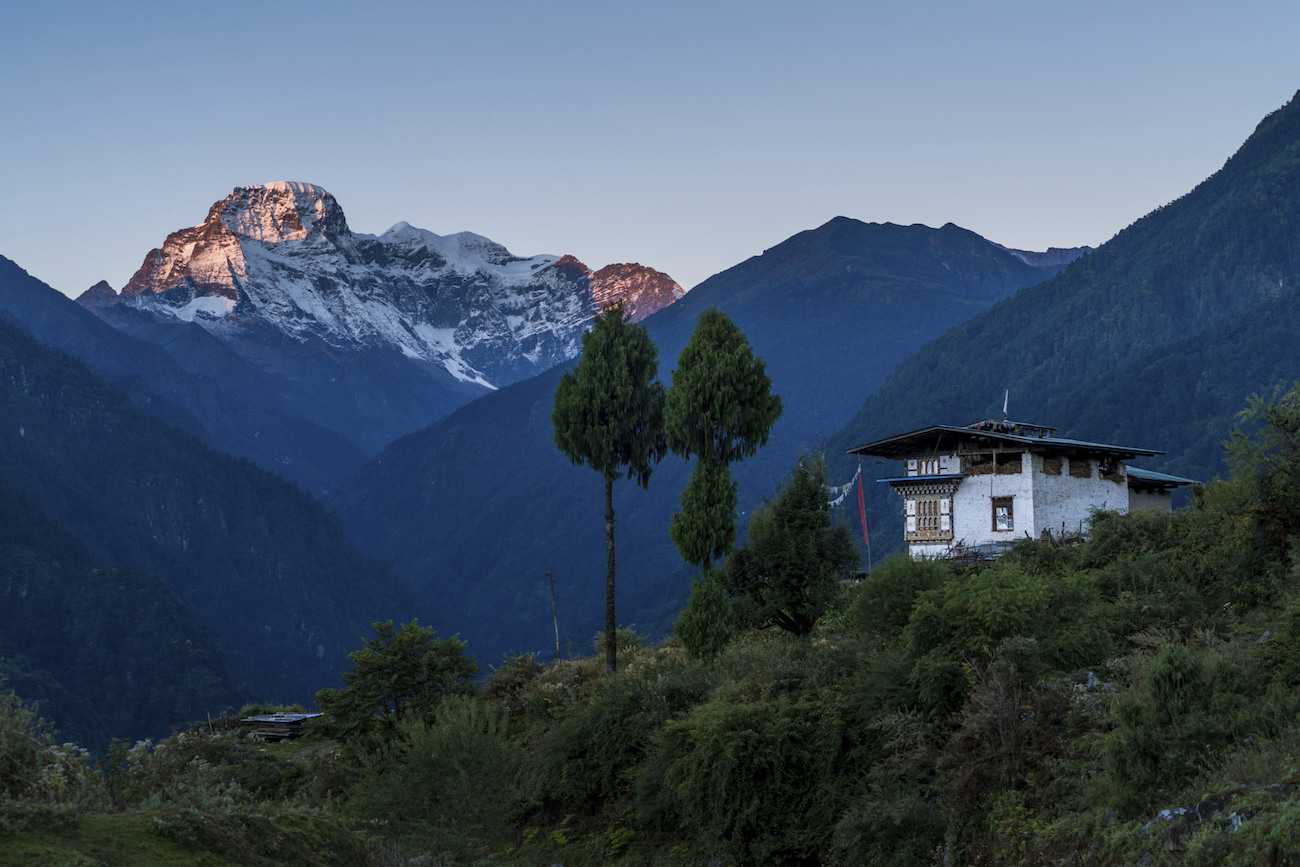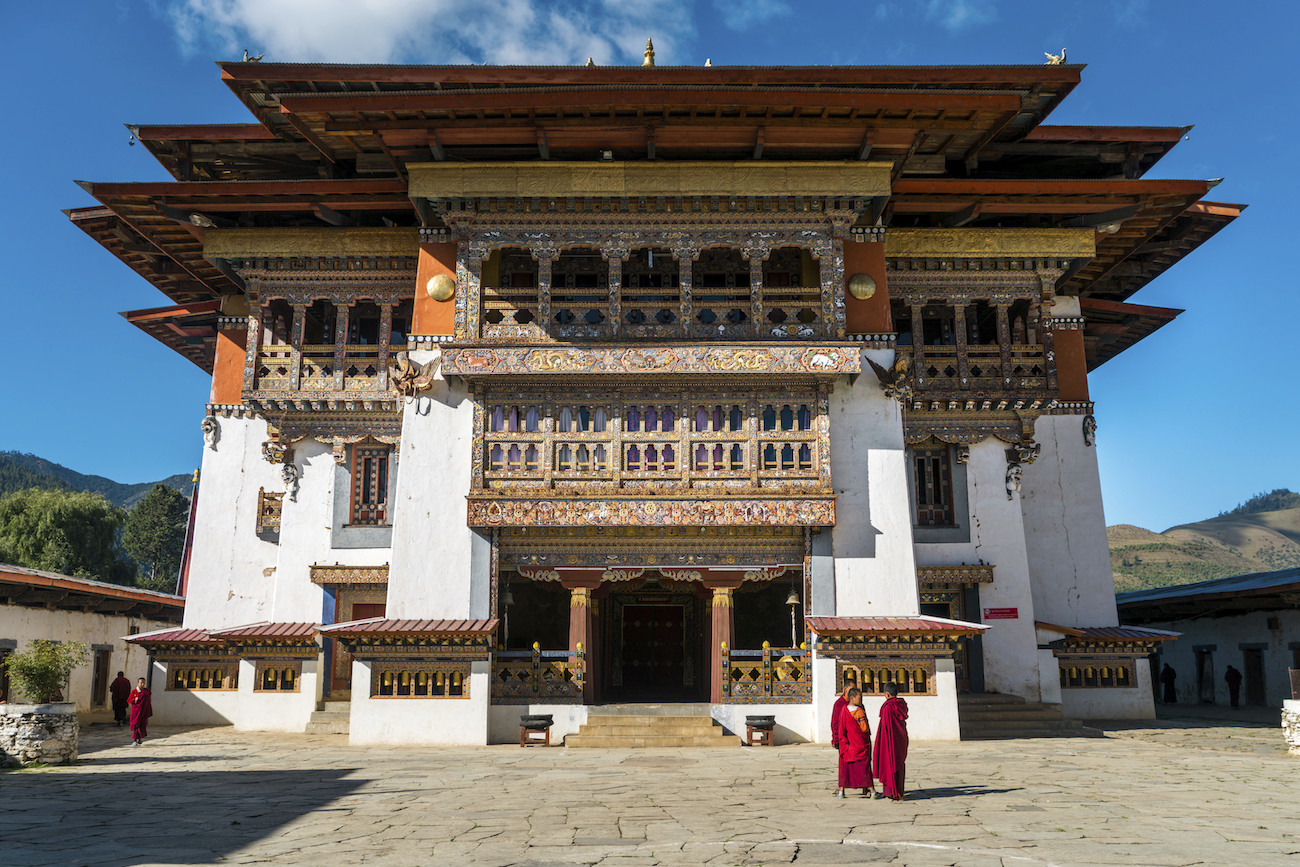小さな旗をつないで作った「祈りの旗」が風にたなびき、険しい谷や道路に舞う。仏教寺院や仏塔、そして「ゾン」と呼ばれる要塞が景観のあちこちに点在する。巨大な水力式のマニ車が、水流を受けて回転している。農家の人々は、ヤクの世話をする。
歴史上一度も他国に征服されたことも、植民地化されたこともない小国ブータンには、古くからの文化が深く残っている。しかし、ブータンは現代世界において、独自の道筋を描こうとしている。独立性や文化、そして自然のままの山や森を犠牲にすることなく、近代化および民主化を果たそうというのだ。
ブータンは観光業でもユニークなアプローチをとっており、「価値が高く、負担の少ない」観光を通じた「独占的」な旅先として自国のプロモーションを行っている。観光客がブータンに旅行する方法は1つしかない。ライセンスを所有する旅行会社を通じ、一日あたり200ドルから250ドル(約2万1,000円から2万6,250円、シーズンによって変動)のパックツアーを予約するのだ。その収益の一部は政府が医療、無償教育、インフラ整備のために活用する。旅費が高額であるにもかかわらず、ブータンはニューヨークタイムズおよび旅行誌のアファーで「2018年に行きたい場所」にランクインしている。
インドと中国に挟まれたブータンは、ヒマラヤに唯一残る仏教王国だ。とはいえ、ブータンは絶対的な君主制から民主的な立憲君主制へと移行している。王族を敬愛するブータン人から反発があったにもかかわらず、2008年には初の国会議員選挙が実施された。
今現国王の父で、4代目の王は1970年代に「国民総幸福量(GNH)」の概念を導入し、国内総生産(GDP)よりも重要だと位置付けた。GNH政策は単なる看板だけのスローガンとは異なり、持続可能な開発、教育、健康を取り入れ、社会的利益を経済成長よりも重視している。タバコは禁止されており、ブータンは世界で唯一の「カーボン・ネガティブ」国家、つまり生成する二酸化炭素量が、森林に吸収される許容量を下回っている国なのだ。
5代目となる現国王のジグミ・ケサル・ナムゲル・ワンチュク氏(愛称はK-5、その名が冠された地元のウィスキーもある)は2016年、過疎の貧困地域に観光客を誘致するため、フェスティバルを立ち上げた。10月に開催される「ラヤ・ロイヤルハイランダーフェスティバル」では、ヤクの品評会やレスリング大会、ポニーレース、伝統舞踊、マスチフ犬コンテストなどのイベントが行われる。
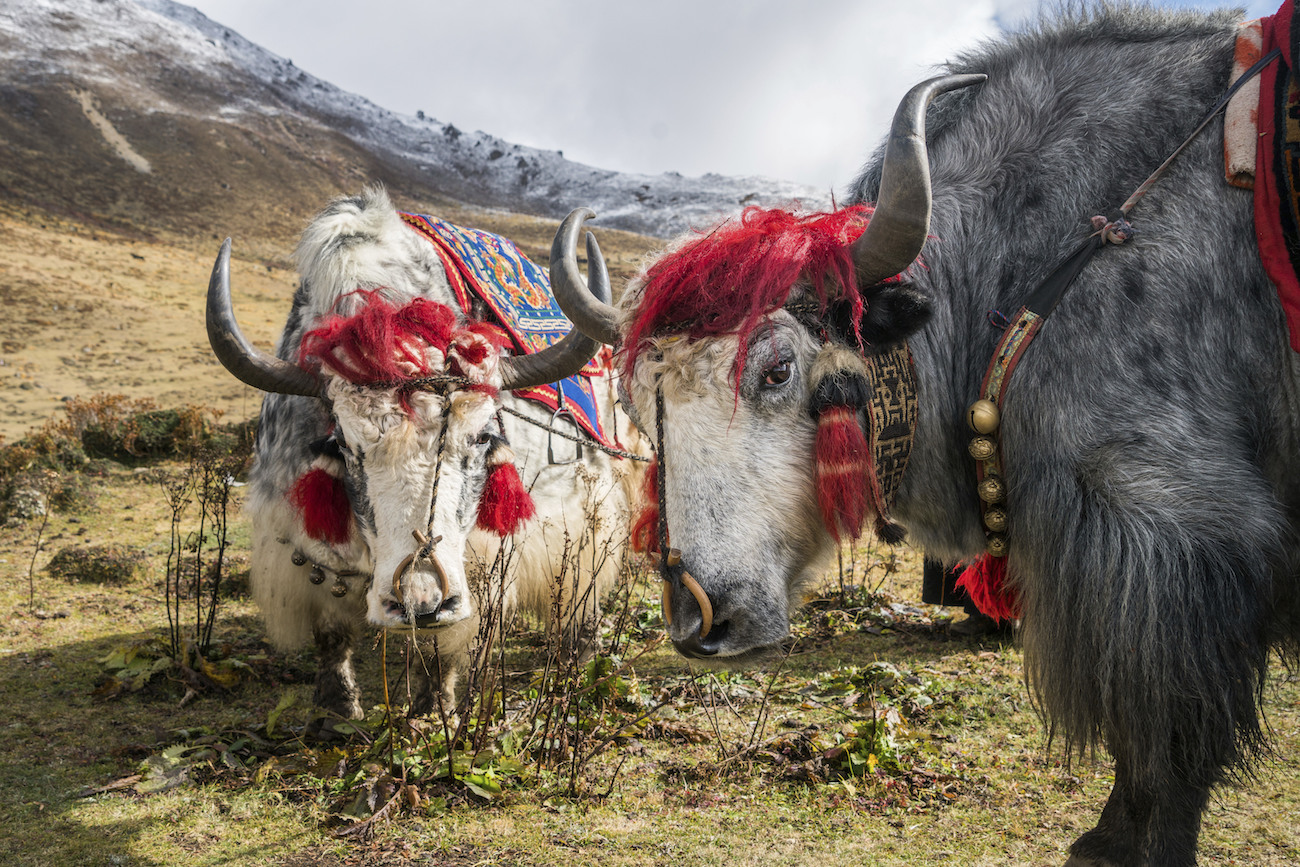
ハイランドフェスティバルに向かう観光客は、高度1,830メートルから3,800メートル以上の山道を往復58キロも歩かなければならない。道中は岩場の多い急こう配で、背中にプロパンタンクやテント、その他の必要物資を背負ったラバとともに進む。雨が降ると足元は泥とフンにまみれ、滑りやすくなる。
辛い道のりにもひるむことなく、国王は昨年10月にも数時間かけて登山した。また、民族衣装(手織りの[デュリ]と呼ばれるスカートと、金の冠のような帽子)に身を包んだ女性もまた赤いパンプスで山道を進んでいった。しかし、旅行者のほとんどは定期的に休息をとりながら、2日間かけて歩いた。辛い旅の見返りとして、息を飲む絶景を堪能することができる。頭上にはヒマラヤがそびえ、そして眼下には氷河からの水をたたえた川が音を立てて流れていく。
フェスティバルの目玉の1つが、ニャゲイと呼ばれる力自慢のレースだ。ヤクの毛で作ったスカートをはいた6人の女性が、それぞれ巨大な厚板を広場の真中へと引きずっていく。そこで板を捨て、23kgの穀物袋を男性パートナーの背中に乗せると、今度は女性自ら男性の背中に乗る。女性を背負った男性は、パートナーが落とした厚板を回収し、スタート地点まで戻り、レース終了だ。この一連の流れを4分以内に、しかも標高約4,000メートル地点で行う競技なのだ。

湿気に強いヤクウールのテントがフェスティバル会場を囲み、安全な座席を提供する。各ブースでは、畜産業(「ラバ生産のため、劣勢の牝馬のみを使用」)からブータン蜂蜜の効能(殺虫剤をほとんど使用しないため、ここの蜂は健康)に至るまで、持続可能な製品や慣行に関する指導を受けられる。
あちこちで目に付くブータンの犬は穏やかで親しみやすく、広場では「カンマ」のような姿勢で丸くなり、眠っていた。メラックの遊牧民たちは、特徴的な黒いビーニー帽をかぶっていた。帽子には雨粒よけの、編み込んだ紐がついている。行商人がヤクの鈴、ヤクの毛の帽子や財布、革で包んだヤクのチーズ(上質なパルメザンチーズのような香り)、そして強力な癒し効果があるといわれる高価な真菌や冬虫夏草が入った小瓶を売っていた。
金色の飾りのついたテントと、王冠のような椅子は、国王のために用意されたものだ。しかし、国王はフェスティバルの間、尊大なそぶりも見せずに、ほとんど休むことなく来場者を温かく歓迎していた。彼は私にまで挨拶してくれ、「ゴ」という着物のような服に手を入れて冬虫袋のボトルを出し、「今、これを買ったところです。あなたもいかがですか。とても効果があると言われているのですよ」と声をかけてくれた。
ずんぐりしたポニーが頭につけた羽飾りを揺らしながら丘を駆け回るレースの前に、昼食がふるまわれた。何百人もの村人や旅行者が同じように足を組んで座る中、手伝いのスタッフが(中には王族の姿も)米と野菜のカレー、そして温かいバター茶をよそってくれた。すべて国王が無償で提供している。
幸福度は空と同じくらい、高かった。
—
ブータンに行くのなら…
ブータン: ブータンへの旅行者は、ライセンスのある旅行業者を通じ、費用はシーズンによって変動するが、1日当たり200ドルから250ドル(約2万1,000円から2万6,250円)のパッケージツアーを予約する必要がある。ブータンの旅行者は、インドや周辺隣国からの客がほとんどだ。欧米人向けのツアーはナショナルジオグラフィック、格安ツアー会社のブルーポピー、高級オペレーターのグレイラングールなどが運営している。いずれも10月、雲龍の国に14日滞在し、ラヤのロイヤルハイランダーフェスティバルなどを体験する。費用は2人部屋で1人6,400ドル(約67万2,000円)から。料金には航空運賃、4つ星および5つ星ホテル、キャンプ、ホームステイなど旅行に関するすべての費用が含まれている。
ブータンの観光地:タイガー・ネスト修道院、首都ティンプーと王国の歴史を感じられる古都プナカ。
LAYA, Bhutan (AP)
Prayer flags whip in the wind, flying across steep valleys and roads. Buddhist temples, stupa shrines and majestic fortresses called zhongs dot the landscape. Giant water-powered prayer wheels spin from tumbling falls. Farmers tend yaks.
Never conquered, never colonized, tiny Bhutan retains much of its deep and ancient culture. But it’s attempting to chart a unique path in today’s world: Modernize and democratize without sacrificing independence, culture or its pristine mountains and forests.
It’s also taken a unique approach to tourism, promoting itself as an “exclusive” destination through “high value, low impact” tourism. Tourists can only visit by booking through licensed tour operators with packages that cost $200 to $250 a day, depending on the season. Some of that money is earmarked by the government for health care, free schools and infrastructure. Despite the high price tag, Bhutan was listed by both The New York Times and Afar magazine on “where to go in 2018” lists.
Wedged between India and China, Bhutan is the last remaining Buddhist kingdom in the Himalayas. But the country has transitioned from absolute monarchy to a democratic, constitutional monarchy. Parliamentary elections were first held in 2008 despite resistance from Bhutanese who revered their royals.
The country’s fourth king, and father of today’s ruler, introduced the concept of gross national happiness in the 1970s as more important than gross domestic product. The GNH measure, far from a bumper sticker slogan, embraces sustainable development, education and health, valuing societal good over economic growth. Cigarettes are banned, and Bhutan is the world’s only carbon-negative country, producing less carbon than its forests absorb.
The fifth and reigning king, Jigme Khesar Namgyel Wangchuck (affectionately known as K-5, also the name of a local whiskey), created a festival two years ago to attract tourists to a poor region with an ethnic nomadic population. The Laya Royal Highlander Festival, held in October, includes events like yak judging, wrestling matches, pony races, native dancing and a contest for best mastiff dog.
Tourists heading to the highland festival face a 36-mile (58-km) roundtrip trek from 6,000 feet (1,830 meters) to more than 12,500 feet (3,800 meters) in altitude mostly on rocky, precipitous trails also used by donkeys (laden with propane tanks, tents and other supplies). Rain can turn those trails into a slippery mess of mud and poop.
The challenging route didn’t stop the king from trekking up in a few hours last October. Nor did it stop a woman in native dress — handwoven duri (skirt), top and shamu la, a golden crownlike hat — from marching up in red pumps. Most tourists, though, take two days with constant pauses to catch their breath. The payoff: breathtaking views of the Himalayas above and roaring glacier-fed rivers below.
One festival highlight is the nyagay, or strongman race (strong woman, too). Six women in yak-wool skirts dragged massive planks of wood halfway across a field, then dropped the planks and heaved 50-pound (23 kg) grain sacks onto the backs of their male partners. The women then climbed on the men’s backs, and the men retrieved the wood, then raced back to the starting line. All this in four minutes at an altitude of nearly 13,000 feet (nearly 4,000 meters).
Yak-wool tents, impervious to the damp, ringed the festival field and provided protected seating. Booths offered instruction on sustainable products and practices, from animal husbandry (“use only inferior mares for mule production”) to the benefits of Bhutanese honey (bees here are healthy because there are few insecticides).
Ubiquitous Bhutanese dogs, unflappable and friendly, curled up on the field like commas and snoozed. The Merak nomads wore their signature black beanies, which have dreadlock-like braids that divert raindrops away from the face. Vendors sold yak bells, yak wool hats and purses, yak cheese wrapped in leather (smelling like a good parmigiano) and vials of the pricey fungus, cordyceps, said to be powerfully healing.
A tent decorated with gold swag and a thronelike chair was designated for the king. But he spent most of his time greeting guests warmly and without pomp. He even greeted me, reaching into his gho, a kimono-like robe, for a bottle of cordyceps, saying: “I just bought this. Would you like to have it? It is said to be very beneficial.”
Before a race where stubby ponies galloped up and down hills, feathered headdresses flying, lunch was served. Hundreds of villagers and visitors alike sat cross-legged as helpers (including royals) ladled rice, vegetable curries and hot butter tea, all compliments of the king.
The happiness quotient was as high as the sky.
—
If You Go…
BHUTAN: Bhutan requires tourists to book packages worth at least $200-$250 a day depending on the season using licensed tour operators . Most tourists visiting Bhutan come from India and other neighboring countries. Tour operators geared to Westerners include National Geographic,, and budget tour company Blue Poppy , along with luxury operator Gray Langur — which offers Kingdom of the Clouds 14-day trip in October, including Royal Highlander Festival in Laya, starting at $6,400 per person, double occupancy, all-inclusive (airfare, four and five-star hotels along with camping and homestays).
BHUTAN ATTRACTIONS: Tiger’s Nest monastery, capital city of Thimphu and Punakha, the former capital, which best shows Bhutan’s regal past.
By ELLEN HALE, Associated Press
LAYA, Bhutan (AP)




